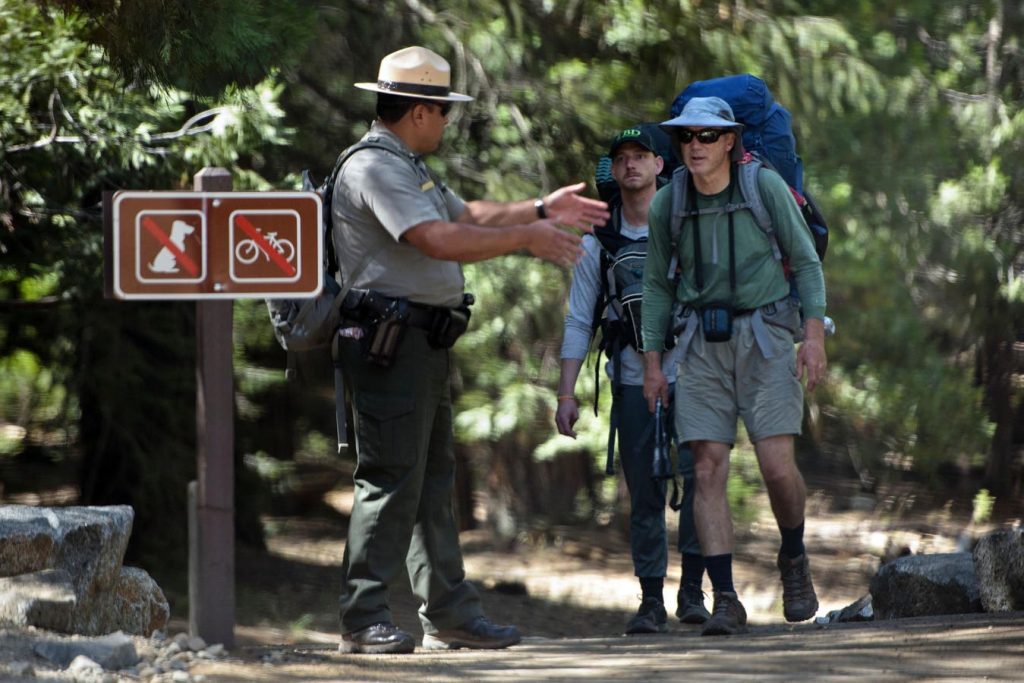The National Park Service provides the most authoritative rankings through raw visitation data it collects across its more than 400 sites, including 63 national parks. (Photo credit BRENDAN SMIALOWSKI/AFP via Getty Images)
AFP via Getty Images
The U.S. National Park Service has been in the crosshairs due to President Donald Trump’s budget proposal to cut more than $1.2 billion from the agency, along with the firing of 1,000 Park Service employees. Following the backlash, the administration announced an increase in the number of seasonal workers.
But can those temporary workers handle the attention kicked up by competition between the parks? Ranking America’s national parks has become something of a cottage industry. Travel websites, magazines and organizations have taken to publishing lists ranking parks from best to worst, and touting niche aspects.
Winter at El Capitan in California’s Yosemite National Park. (Photo by Camerique/Getty Images)
getty
The National Park Service provides the most authoritative rankings through raw visitation data it collects from more than 400 sites, including 63 national parks. What’s the most visited park? That continues to be the Great Smoky Mountains National Park. It had 12,191,834 visits in 2024.
Next is Zion National Park with 4,946,592 visits and Grand Canyon National Park with 4,919,163 visits. The top ten list also includes Yellowstone (4,744,353), Rocky Mountain National Park (4,154,349), Yosemite (4,121,807), Acadia (3,961,661), Olympic (3,717,267), Grand Teton (3,628,222) and Glacier National Park (3,208,755).
Travel publications create their own rankings by factoring in criteria that appeal to visitors. Those rankings include such considerations as accessibility, natural beauty, scenic diversity, hiking opportunities, the best wildlife viewing (and what kind of wildlife) and an overall range of activities offered.
‘Instagrammable’ National Parks Are Favored
Social media has largely fueled the ranking trend. Parks that are “Instagrammable” often get inordinate attention because of their striking beauty alone, when other variables can figure into what can make a national park desirable.
Backpacker hiking across a river in the Great Smoky Mountains National Park.
getty
Numerous travel blogs rank national parks. The blog, “Trip Of A Lifestyle” figured in three factors: “Wow Factor,” “Fun Factor” and “Crowd Factor.” Lauren and Steven Keys visited and photographed all the national parks before ranking them. After “months of nonstop travel and dozens of hours of debate,” according to their blog, they came up with a definitive personal list.
The Keys concluded that seven national parks tie for first place: Death Valley (the hottest place on Earth, but otherworldly in feel), Yosemite, Hawai’i Volcanoes, Yellowstone, American Samoa (one drawback mentioned: “there are feral dogs everywhere on the island”), Carlsbad Caverns (noted for its massive underground caves and magnificent formations) and Canyonlands, which the couple term, “one of the best-kept secrets of the National Park system.”
Some National Parks Are “Really Boring,” Say Travel Bloggers
Travel blogger Lee Abbamonte has ranked all 63 of the parks based on his tastes and experience. Yosemite tops his list. “Yosemite is big, it has iconic hikes like Half Dome, and it has amazing waterfalls, trees and vistas,” writes Abbamonte on his blog. “Tunnel View at sunset is the single most beautiful view in America when Half Dome turns orange at the top.”
Hot Springs National Park in Arkansas, with its thermal springs, hiking trails and nine historical bathhouses, was at the bottom of Abbamonte’s list. He found the park “really boring, uninteresting and I don’t understand why it’s a national park in the first place.”
The Quapaw Baths on Bathhouse Row in Hot Springs National Park, in Hot Springs, Ark. (AP Photo/Beth Harpaz)
AP2005
What’s the least-visited national park? Gates of the Arctic National Park and Preserve recorded only 11,907 visits in 2024, no doubt partly because of its remote north Alaska location.
Such remote parks, however, are ranked higher by wilderness groups, which value their unspoiled nature, no matter how hard it might be to actually reach them.
Forbes has ranked national parks based on crowd size, an increasingly crucial factor given rising popularity. Writer Joe Yogerst compiled ten parks that aren’t crushed by urban throngs: Black Canyon of the Gunnison (Colorado), Channel Islands (California), Congaree (South Carolina), Dry Tortugas (Florida), Great Basin (Nevada), Guadalupe Mountains (Texas), Isle Royale (Michigan), Lassen Volcanic (California), North Cascades (Washington State) and Voyageurs (Minnesota).
A Campaign To Crown The Global King Of National Parks
A female leopard relaxes in the branches of a dead tree in the Kruger National Park, South Africa. (Photo by Tom Stoddart/Getty Images)
Getty Images
The race to be the best has recently gone global. In March, the non-profit National Parks Association launched its “World’s Best National Parks,” a year-long campaign that allows the public to vote on favorites. Campaign dates are March 18, 2025, through June 11, 2028. Website visitors can vote for one park per country per day. There are three phases to the campaign:
Phase one: votes will determine the best national park among countries, and parks with the most votes will advance to phase two. Phase one runs through March 17, 2026.
During phase two, each country’s leading parks will compete within their own continents. The voting runs from March 18, 2026, to March 17, 2027.
Phase three pits the top continental parks against each other in a competition to capture the title of the “World’s Best National Park.” The voting runs from March 18, 2027 to June 11, 2028.
Yosemite National Park currently leads the race, followed by Mkomazi National Park in northeastern Tanzania and Kruger National Park in northeastern South Africa.

